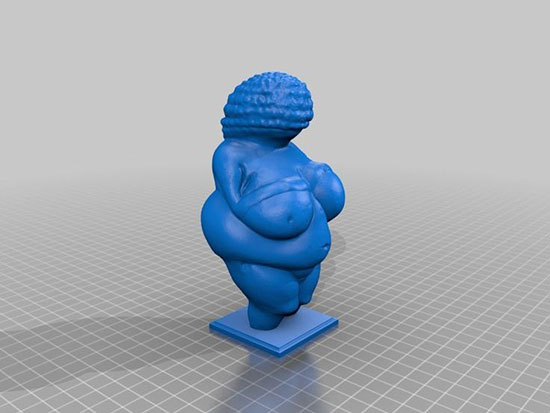What if There’s No Next Big Thing?
What if, in the tech world, there is no next big thing? First we had fire, then came the wheel, and the PC, then the internet and then Google and then the iPhone and then … that’s it. There’s nothing more left to come. We’re waiiiiiiting—but no, we’ve received all there’s going to be and tech’s broad strokes have all happened. Does this sound scary, or kind of sad? We can laugh at such a proposition because we know it’s not going to happen. We might dream of a year when people would just stop inventing new things, but in reality there’s going to be more and more new stuff. All of us will continue our lives permanently vibrating on the tech revolution’s vertical asymptote—screaming like Mia Farrow in Rosemary’s Baby, mid-coitus with the devil: “Oh my God, this is really happening!”
Let’s look at the art world and ask the same question: What if there’s no next big thing? There was the Venus of Willendorf and Picasso and Duchamp and then Warhol and then came a hundred thousand highly defended micro-niches so microscopic that they make sense only when looked at in aggregate, like a mole of carbon dioxide molecules or a computer model of butterfly migrations in and out of Mexico: “The Emergent Behavior of Early Twenty-First Century Contemporary Art.” What if the micro-niching of art is art’s last broad stroke? What if art is over? Okay, this sounds like Francis Fukuyama’s pronouncement on liberal democracy, and it’s probably not true—probably—but it seems a lot more probable than the big strokes of technology coming to an end.

This image is a rendering of the 3-D printable scan file of Venus of
Willendorf,
the statue itself dating back to c. 28,000 B.C.E – 25,000
B.C.
Many people have noticed the sense of increasing sterility in contemporary art. It’s natural to wonder, “Hey, maybe there’s some larger picture we’re missing here. Maybe there’s a next big art thing out there that’s so big as to be invisible.” Here’s another thought: What if tech itself is the next big thing in the art world? What if tech itself is the Duchamp urinal in the twenty-first century Armory Show? Is the notion that technology = art depressing? Are you a hater to think such things? Which is better art: a performative piece whose movements are informed by real-time Los Angeles traffic patterns, or plein air watercolors of delicate song birds done on a foggy morning? Does it drive you crazy when autocorrect always flags the word “performative”?HT: ArtNews
Today, when dealers speak with a potential client about a new artist, the client almost always asks, “Is this new artist young? How young are they? And how new is the technology they’re using … has it been released or is it in beta? Is anyone else using this new technology?” The impulse behind this reflexive questioning can be one of two things: a puritanical interest in new forms and ideas—or opportunism wearing a cloak of art-world puritanism. Does this young artist have any technologies that he or she needs to unlearn? No? Great. Do they know much about the art world? No? Even greater. Do they produce actual physical things at the end of whatever it is they do? Yes? Wonderful. And finally, does this artist use something that can be related to VR or augmented reality? Yes? Okay then—Frieze, we have a perfect storm. Fifty years after McLuhan’s Understanding Media, the medium that drives the message is still the message—and sometimes it seems like the only hope for any message at all.
Implicit in this not uncommon dealer-client exchange is an unspoken assumption that new technologies allow new and hitherto unforeseen dimensions of the human condition to be made manifest. I wonder: If human beings stopped creating new technologies as of today, would the art world crater overnight? Artists would be limited to further documentation from within a fixed realm without technological novelty. With seven billion people on Earth, chances are we’d soon catalogue almost all experience available with the tools at hand. We’d enter a world of perpetual repetition with nothing new....MORE